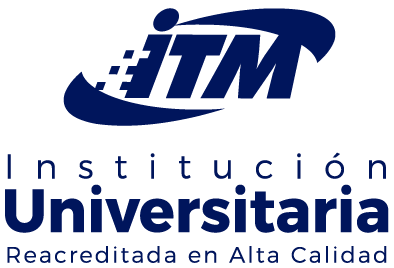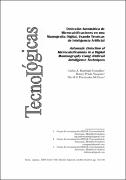Mostrar el registro sencillo del ítem
Detección Automática de Microcalcificaciones en una Mamografía Digital, Usando Técnicas de Inteligencia Artificial
| dc.contributor.author | Madrigal-González, Carlos A. | |
| dc.contributor.author | Prada-Vásquez, Ronny | |
| dc.contributor.author | Fernández-McCann, David S. | |
| dc.date.accessioned | 2019-07-18T14:11:20Z | |
| dc.date.accessioned | 2019-08-13T15:47:18Z | |
| dc.date.available | 2019-07-18T14:11:20Z | |
| dc.date.available | 2019-08-13T15:47:18Z | |
| dc.date.issued | 2013-11-19 | |
| dc.identifier | https://revistas.itm.edu.co/index.php/tecnologicas/article/view/332 | |
| dc.identifier | 10.22430/22565337.332 | |
| dc.identifier.uri | http://hdl.handle.net/20.500.12622/696 | |
| dc.description.abstract | El cáncer de mama es uno de los que tiene mayor índice de mortalidad entre las mujeres y la detección temprana incrementa las posibilidades de curación, por lo que hacerlo a tiempo ha demostrado ser uno de los mejores tratamientos para esta grave enfermedad. Las microcalcificaciones son un tipo de lesión dentro de la mama y su presencia está altamente correlacionada con la presencia del cáncer. En este artículo se presenta un método para la detección automática de microcacificaciones usando procesamiento digital de imágenes basado en un enfoque gaussiano de filtrado, el cual permite realzar el contraste entre las microcalcificaciones y el tejido sano de la mama, para luego aplicar un algoritmo de identificación de las microcalcificaciones sospechosas basado en su morfología. El clasificador usado para determinar el grado de Malignidad o Benignidad de las microcalcificaciones es el K-Vecinos más Cercanos (KNN) y la validación de los resultados se realiza mediante las curvas ROC. | spa |
| dc.format.mimetype | application/pdf | |
| dc.language.iso | spa | |
| dc.publisher | Instituto Tecnológico Metropolitano (ITM) | spa |
| dc.relation | https://revistas.itm.edu.co/index.php/tecnologicas/article/view/332/338 | |
| dc.rights | Copyright (c) 2017 Tecno Lógicas | spa |
| dc.source | 2256-5337 | |
| dc.source | 0123-7799 | |
| dc.source | TecnoLógicas; Special edition (2013); 743-756 | eng |
| dc.source | TecnoLógicas; Edición Especial (2013); 743-756 | spa |
| dc.subject | Procesamiento digital de imágenes | spa |
| dc.subject | filtro Gaussiano | spa |
| dc.subject | microcalcificaciones | spa |
| dc.subject | K-Vecinos más cercanos | spa |
| dc.title | Detección Automática de Microcalcificaciones en una Mamografía Digital, Usando Técnicas de Inteligencia Artificial | spa |
| dc.title.alternative | Automatic Detection of Microcalcifications in a Digital Mammography Using Artificial Intelligence Techniques | |
| dc.subject.keywords | Digital image processing | eng |
| dc.subject.keywords | Gaussian filter | eng |
| dc.subject.keywords | microcalcifications | eng |
| dc.subject.keywords | K-nearest neighbor | eng |
| dc.type | info:eu-repo/semantics/article | |
| dc.type | info:eu-repo/semantics/publishedVersion | |
| dc.type | Computer's science | spa |
| dc.relation.ispartofjournal | TecnoLógicas | |
| dc.description.abstractenglish | Breast cancer is one of the cancers that has a higher mortality rate among women and early detection increases the possibilities of cure, so its early detection is one of the best treatments for this serious disease. Microcalcifications are a type of lesion in the breast and its presence is highly correlated with the presence of cancer. In this paper we present a method for automatic detection of microcalcifications using digital image processing using a Gaussian filtering approach, which can enhance the contrast between microcalcifications and normal tissue present in a mammography, then apply a local thresholding algorithm witch allow the identification of suspicious microcalcifications. The classifier used to determine the degree of benign or malignant microcalcifications is the K-Nearest Neighbours (KNN) and the validation of the results was done using ROC curves. | eng |
| dc.rights.accessrights | info:eu-repo/semantics/openAccess | |
| dc.type.coar | http://purl.org/coar/resource_type/c_6501 |


